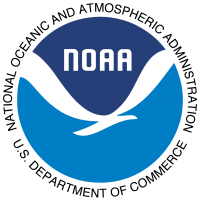About Weather Lab
What is this app all about?
An important part of knowing how weather works is being able to understand how ocean and air currents form weather patterns. The Smithsonian Science Education Center (SSEC) has designed this app to help you visualize how air masses and ocean currents interact in North America, specifically in the spring. Your role, as a budding meteorologist, is to predict how to prepare for weather when you have different scenarios of ocean currents and air masses interacting. Students will choose one ocean current and two air masses for each scenario, and then predict how to prepare for the weather that the systems generate. Remember, this is a model, so it only gives you a snapshot of what might happen in one instance of time, and there is a great deal of variability in all weather forecasting. After you choose the correct answer for the scenario selected, you will also be given a link to a real life situation where the weather interactions occurred. Click on the link provided to learn more.
Wait a minute, aren’t there more ocean currents than just gyres?
Yes! Many ocean currents make up each gyre. But, for this app we have simplified the ocean currents into major gyres. If you would like to see a map of global ocean currents, check out this link from the National Oceanic and Atmospheric Administration (NOAA): http://www.adp.noaa.gov/currents_map.html.
What do all the letters in the air mass boxes mean?
You are going to see check boxes with letters in each air mass box. These represent the four main types of air masses that occur in North America. Here is what they mean:
- mT= Maritime Tropical: A warm and humid air mass year-round that forms over the oceans and warm waters of the equator. (warm/moist)
- cT= Continental Tropical: A warm, dry air mass that forms over the desert Southwest of the United States and northern Mexico. (warm/dry)
- mP= Maritime Polar: A cold or cool air mass that always carries moisture. It forms over the cool North Atlantic and Pacific Oceans. (cool/moist)
- cP= Continental Polar: A cold dry air mass that forms over the interior of Canada and Alaska. (cool/dry)
Before branching out on your own here are a couple scenarios that you might want to try,with a description of what is happening:
SCENARIO 1
Choose the following: The Pacific Ocean gyre moves cool, moist air to meet warm, moist air
Ocean Current: Pacific Ocean Gyre
Air Mass 1: mT (Maritime Tropical)
Air Mass 2: mP (Maritime Polar)
Let’s break it down: In this scenario you have three main things happening:
- The Pacific Ocean gyre is moving the cool, moist air of the maritime polar (mP) air mass southward toward the United States. This air mass moves across the Rocky Mountains, across the Southwest, and toward Texas and the southern states.
- Warm, moist air from the Gulf of Mexico (Gulf Loop Current) travels as a maritime tropical (mT) air mass toward Texas and the Southwest.
- A warm frontal boundary forms where the two fronts meet. This type of interaction often causes violent thunderstorms, and sometimes even spawns tornados or hail. If you follow the link, the image from the August 27th event shows how clouds swirl and form when the two air masses meet, sometimes causing heavy rainfall and flooding like they did on that day.
SCENARIO 2
Choose the following: The North Atlantic Ocean gyre moves warm, moist air to meet cool, dry air Ocean Current: North Atlantic Gyre
Air Mass 1: mT (Maritime Tropical)
Air Mass 2: cP (Continental Polar)
Let’s break it down: In this scenario you have three main things happening:
- The North Atlantic Ocean gyre is moving the warm, moist air of the mT air mass up from the equator and inland toward the Southeast United States.
- Cool, dry air from the continental polar (cP) air mass is coming down from Canada toward the Ohio Valley and the Southeast United States, where it meets the warm, moist air coming from the Atlantic.
- A warm frontal boundary forms where the two fronts meet, and nice weather follows. The weather may start out cool as the cold, dry front moves in, but the warm, moist front comes up from underneath it and causes nice weather to set in.
For Teachers
This weather app supports the SSEC curriculum on weather. It can also stand alone as support for meeting the Next Generation Science Standards, specifically the performance expectation MS-ESS2-5:
Collect data to provide evidence for how the motions and complex interactions of air masses results in changes in weather conditions.
NOAA has a wide range of supporting materials available. Check out their website on air currents and weather: http://oceanservice.noaa.gov/education/kits/currents/05currents1.html.
Special thanks to:
